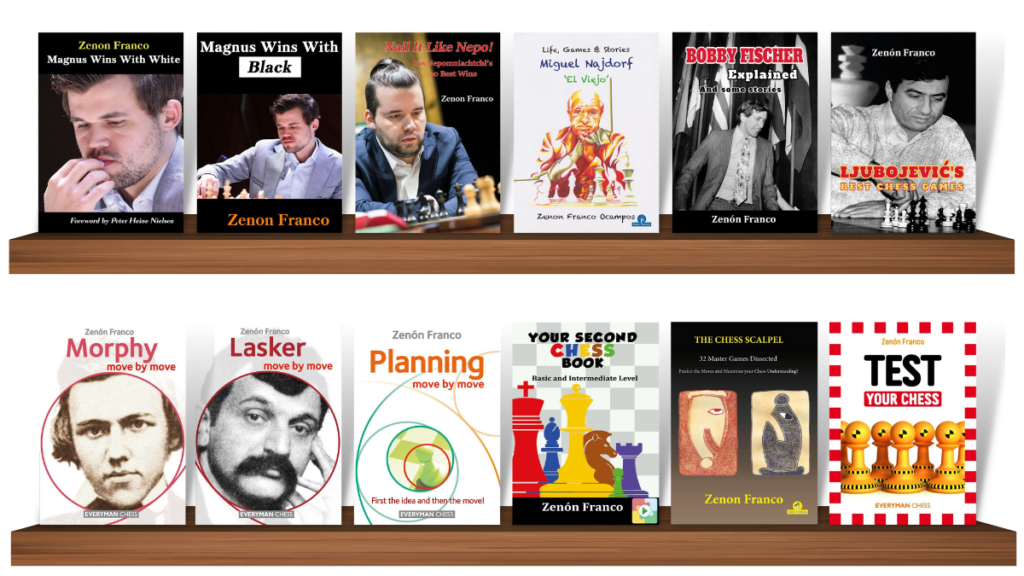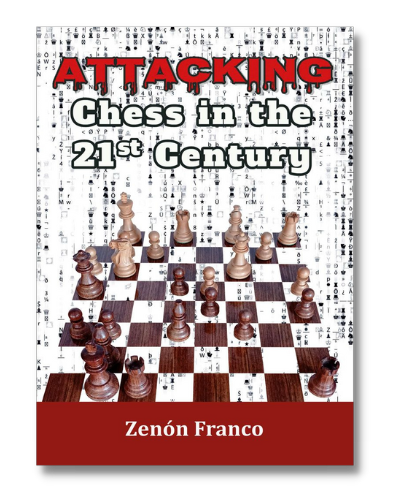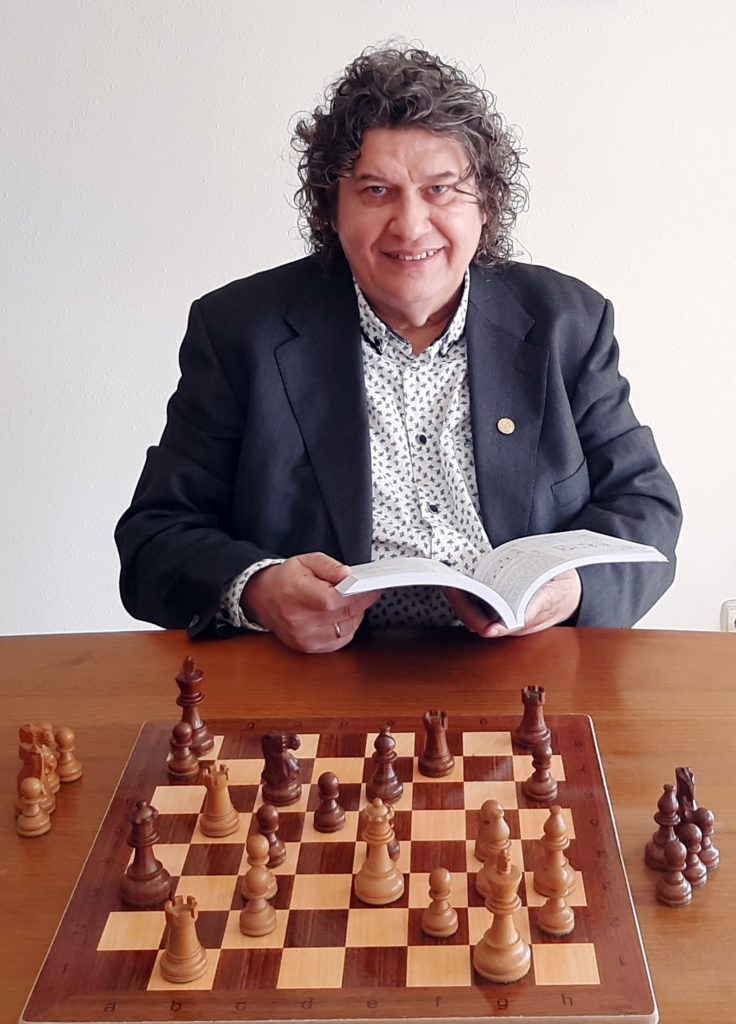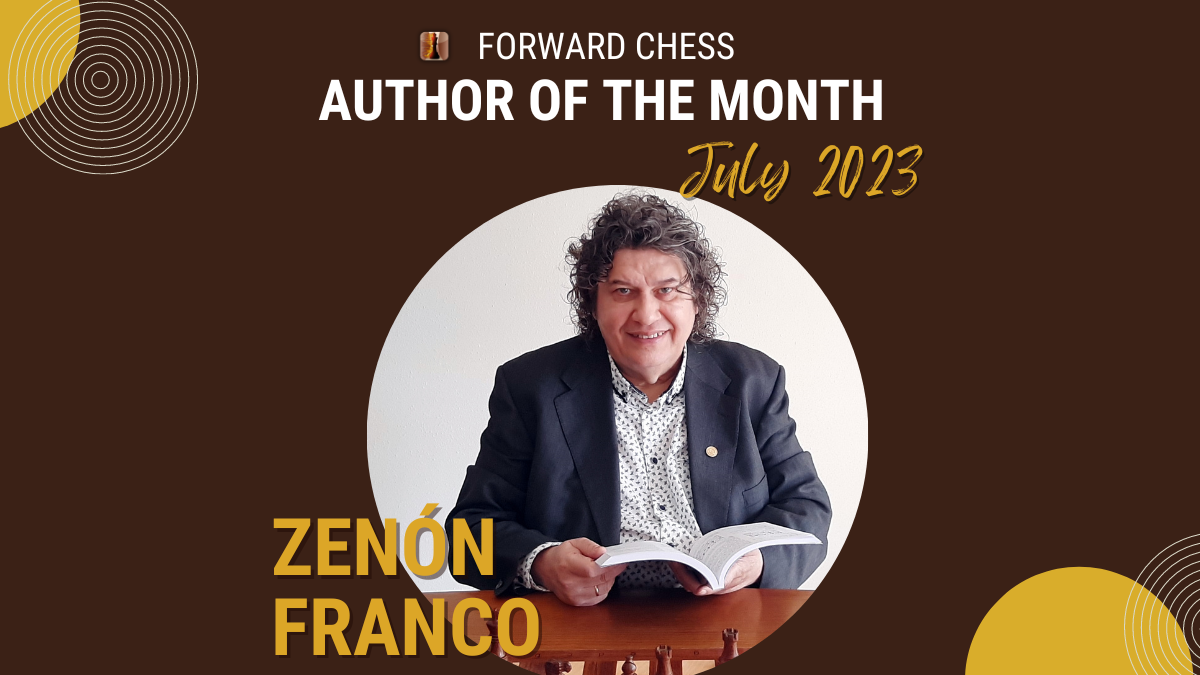Get to know our Forward Chess author of the month for July 2023, Grandmaster Zenón Franco Ocampos, and his latest release “Attacking Chess in the 21st Century“.
Zenón Franco
Chess training
I have 38 books published in seven languages, they are different kinds of books, but two with similar themes are the majority; they involve self-training.

“Guessing” the moves
I learned to play chess in Buenos Aires, where chess was, and still is, very popular. When I was a teenager there were activities eagerly awaited by the fans such as blitz tournaments and contests involving the ‘guessing’ of moves.
The latter particularly appealed to me; together with the impact of seeing an exercise by Bent Larsen in the Argentinean magazine Ajedrez, those contests were probably the reason why years later I started to write similar tests for the now-demised Argentinean magazine El Rey. It is not an exaggeration to say that I wrote my first book, Chess Self Training published by Gambit, nearly 20 years ago, in part as a result of all those events!
The basic idea of this kind of training is to play the role of ‘teacher at home’ by often suggesting main alternatives – even some ‘tricky’ suggestions – and then explaining the reasons, and giving points for the best moves.
The idea of my new book, Attacking Chess in the 21st Century, is to provide training, and thus improve your game.
Motivation
A few years ago, it gave me great pleasure to read that the Spanish scientific populariser Eduard Punset believed that it was very important for the student to take an active part in the lesson since in this way his or her learning would be enhanced.
That is precisely the idea behind this type of book.
During my coaching period, I was able to witness how motivating it is for kids to receive points for the right answers as their ‘lives are at stake’ when they try to find the answers, and it is a challenge much appreciated by them.
Later I also noticed a similar effect with adults although, unlike the kids, the older students try to hide it.
Attacking Chess in the 21st Century
Some years ago, I wrote a book called “The Art of Attacking Chess”; the present book is also about attacking, but the games are only from this century, and additional focus has been provided in the annotated games.

Attention has been paid not only to what happens on the board but also, wherever possible, to the influence of the analysis engines not only on a player’s preparation for the game, something that has become more important in these early years of the new century, but also on the practical context of the game.
It was enlightening to read that the five-time world champion, Magnus Carlsen, mentioned that the difficulty involved in playing a position is a factor to take into consideration and that in such cases the engine’s assessment is not that useful. Magnus talks about the practical side of the game, and in the book, I also tried to put special emphasis on the practical side of the game.
In wanting to shed light on this growing influence I was helped by the invaluable information given by the players themselves, whenever I was able to obtain it.
The influence of the engines can be seen in the attack itself but much more so in the player’s preparation in the openings, which now, in games played at the highest level, have a depth unthinkable in the last century.
About attacking play
With regard to attacking play, as I commented in my previous book on this subject, you don’t need to be Tal to be able to go into a game knowing that you’re going to be able to attack.
Nevertheless, there needs to be factors in the position that justify and, according to Steinitz, even oblige a player to attack. As the first World Champion advised:
“When a sufficient advantage has been obtained, a player must attack or the advantage will be dissipated”.
There are some truly excellent attacking players, but in modern chess, we see more multifaceted styles, and players who are capable of playing all types of positions equally well. This is the so-called ‘universal style’, a term most associated in the past with Boris Spassky and nowadays with Magnus Carlsen, among many others.
Mastering attacking play in chess is a dream that we all long to achieve, but of course the art of attack does not arise by itself. Constructing positions that favor the attack is the most difficult task. In this book we shall see games with brilliant finishes, but we shall also draw attention to the different phases through which the struggle passes, in order to make such finishes possible.
Exercises and questions
The book is similar to “Guess the move” type, the difference is that there are no points involved, and there are exercises, as in those books, the difference is that here there are also questions from the reader to the writer.
This method, like “guessing the moves”, is also useful for personal training and learning as well as for teaching.
Of course, it is also possible to treat these simply as annotated games, without testing yourself, but the training benefit is greater if you take an active part in the ‘lesson’.
Once again, I should like to say that, as always happens to me, every stage in the production of this book has been a great pleasure, from the beginning, when there is no set course, then the phase in which the book seems to take on a life of its own and plot its own course, and finally the stage of checking and correcting; the whole process has been a source of great pleasure to me.
The structure of the book
The book consists of 36 games divided into four chapters. The games are prefaced by brief biographical information and a short description of the events of the game. After each game some lessons are highlighted.
Chapter 1
The King in the center
This chapter contains ten games, in each of which at least one of the kings is in the center, which influences the course of the struggle.
Chapter 2
Kings castled on the same side
In this chapter, we view twelve attacking games in which both sides have castled on the same side.
In the last two games that we shall see, the queens are soon exchanged but nevertheless, positions arise in which the kings come under attack.
Chapter 3
Kings castled on opposite sides
This chapter contains six games in which the attack develops against kings castled on opposite wings.
Chapter 4
Attack, defense, and counterattack
In the final chapter, there are eight games in which the roles of attacker and defender are not permanent, giving rise to counterattacks.
Have any thoughts or questions? Let us know in the comments below!
For a limited time, Forward Chess is offering a special sale on all of Zenón Franco’s books.

Zenon Franco Ocampos was born in Asuncion, Paraguay, May 12, 1956. From there he moved to Buenos Aires until 1990. Since 1990 he has lived in Spain.
Zenon authored 38 chess books which have been published in seven languages and is a respected Grandmaster and FIDE Senior Trainer. He has participated in 11 chess Olympiads and will be part of the Paraguay team during the Budapest Olympiad 2024. His most successful pupils include Grandmaster Francisco Vallejo Pons and IM David Martinez Martin.
He received the 2016 Isaac Boleslavsky book of the year award from the FIDE Trainers Commission and his book “Miguel Najdorf El Viejo”, was the runner-up as the best book of 2021 according to FIDE. In 2016, Zenon was granted an award by the Paraguayan parliament “in recognition for his invaluable and meritorious contribution to Paraguayan sport”: for his chess career and for his help in the development of chess in Paraguay.
- The Power of Pattern Recognition: The Woodpecker Method 2 - August 20, 2024
- Rock Solid Chess: Volume 2 - February 21, 2024
- Unsung Heroes of Chess - February 19, 2024
